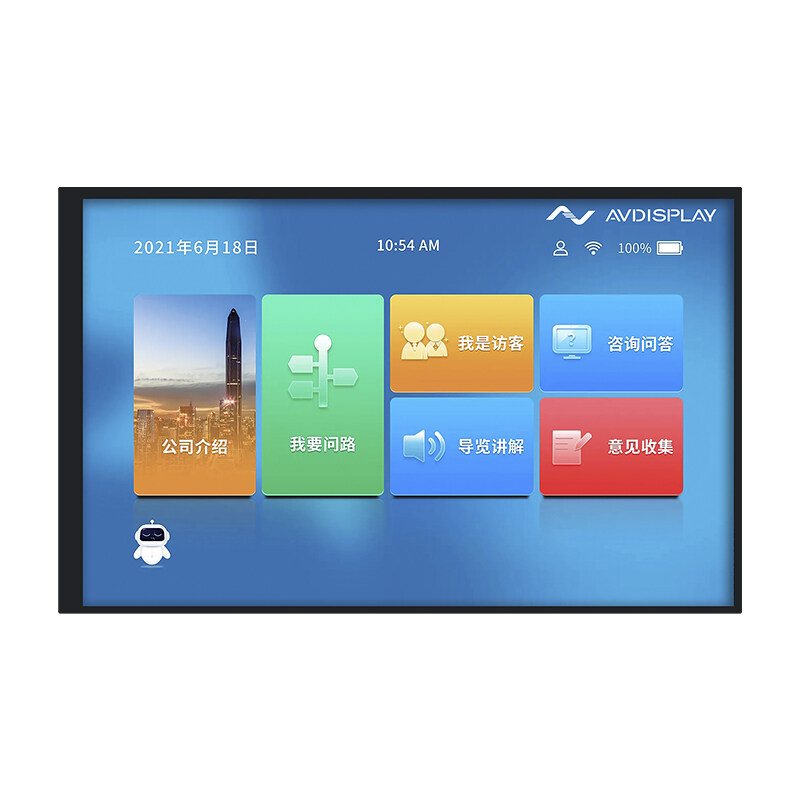Email format error
Email cannot be empty
Email already exists
6-20 characters(letters plus numbers only)
The password is inconsistent
Email format error
Email cannot be empty
Email does not exist
6-20 characters(letters plus numbers only)
The password is inconsistent


In an increasingly digital world, the way we interact with technology has become more tactile than ever. Touchscreen technology has revolutionized the way we use smartphones, tablets, ATMs, and even industrial control systems. But have you ever wondered what lies beneath the surface of these interactive displays? Let's explore the different types of touch screens and understand their unique characteristics, advantages, and ideal applications.
Touch Screen Fundamentals
A touch screen is an input/output device that allows users to interact with a device by touching areas on the display. The technology behind these screens has evolved over the years, offering various methods to detect and respond to touch. The main components of a touch screen include touch sensors, controllers, and drivers, which work together to translate touch gestures into actionable inputs.
Resistive Touch Screens
Resistive touch screens are composed of two layers separated by insulating dots. When pressure is applied, the layers touch, completing a circuit and allowing the controller to calculate the touch coordinates. These screens are known for their durability and ability to work with any object that applies pressure, making them ideal for industrial settings and point-of-sale systems.
Capacitive Touch Screens
Capacitive touch screens work on the principle of electric capacitance. They consist of a conductive layer that stores electrical charges. When a finger comes into contact with the display, it disrupts the charge grid, and the controller detects the touch location. These screens are known for their high sensitivity, clarity, and multi-touch capabilities, making them popular in consumer electronics like smartphones and tablets.
Infrared Touch Screens
Infrared touch screens use a grid of LEDs and photocells to detect touch. When an object interrupts the infrared beams, the screen calculates the touch point. These screens are known for their clarity and ability to detect touch with any object, including gloves, but they can be affected by dust and strong light.
Surface Acoustic Wave (SAW) Touch Screens
SAW touch screens use ultrasonic waves that travel across the screen surface. When touched, the waves are absorbed, and the change is detected by the screen's microchip controller. SAW screens offer excellent clarity and accuracy but can be affected by dirt and water.
Application-Specific Considerations
The choice of touch screen technology depends on the specific application. For instance, resistive screens are suitable for industrial applications where durability and the ability to work with various input objects are crucial. Capacitive screens, with their high sensitivity and clarity, are ideal for consumer devices where precision and aesthetics matter.
Environmental Factors
The environment in which the touch screen will be used is another critical factor. For example, infrared and SAW screens might not be the best choice for environments with a lot of dust or direct sunlight, as these can interfere with their functionality.
Cost and Performance
Cost is also a significant consideration. While capacitive screens offer superior performance, they can be more expensive than resistive screens. The choice often comes down to balancing cost with the desired performance characteristics.

Advancements and Innovations
The touch screen market is continuously evolving, with new technologies emerging to enhance user experience. Developments in material science have led to the creation of curved and flexible touch screens that provide haptic feedback, offering new possibilities for device design and interaction.
Growing Demand and Applications
As the demand for touch screens grows, driven by the increasing use of smart devices and the Internet of Things (IoT), we can expect to see more innovations in this field. The integration of artificial intelligence (AI), gesture recognition, and predictive analytics is set to further improve the functionality and user experience of touch screens.
The world of touch screens is diverse, with each type offering unique benefits and tailored to specific applications. Understanding the differences between resistive, capacitive, infrared, and SAW touch screens is crucial for selecting the right technology for your needs. As technology advances, we can look forward to more sophisticated and intuitive touch screen solutions that will continue to shape the way we interact with the digital world. Whether you're a consumer looking for the best smartphone or a business seeking the optimal display solution, knowing your touch screen options is the first step towards a more interactive and engaging experience.